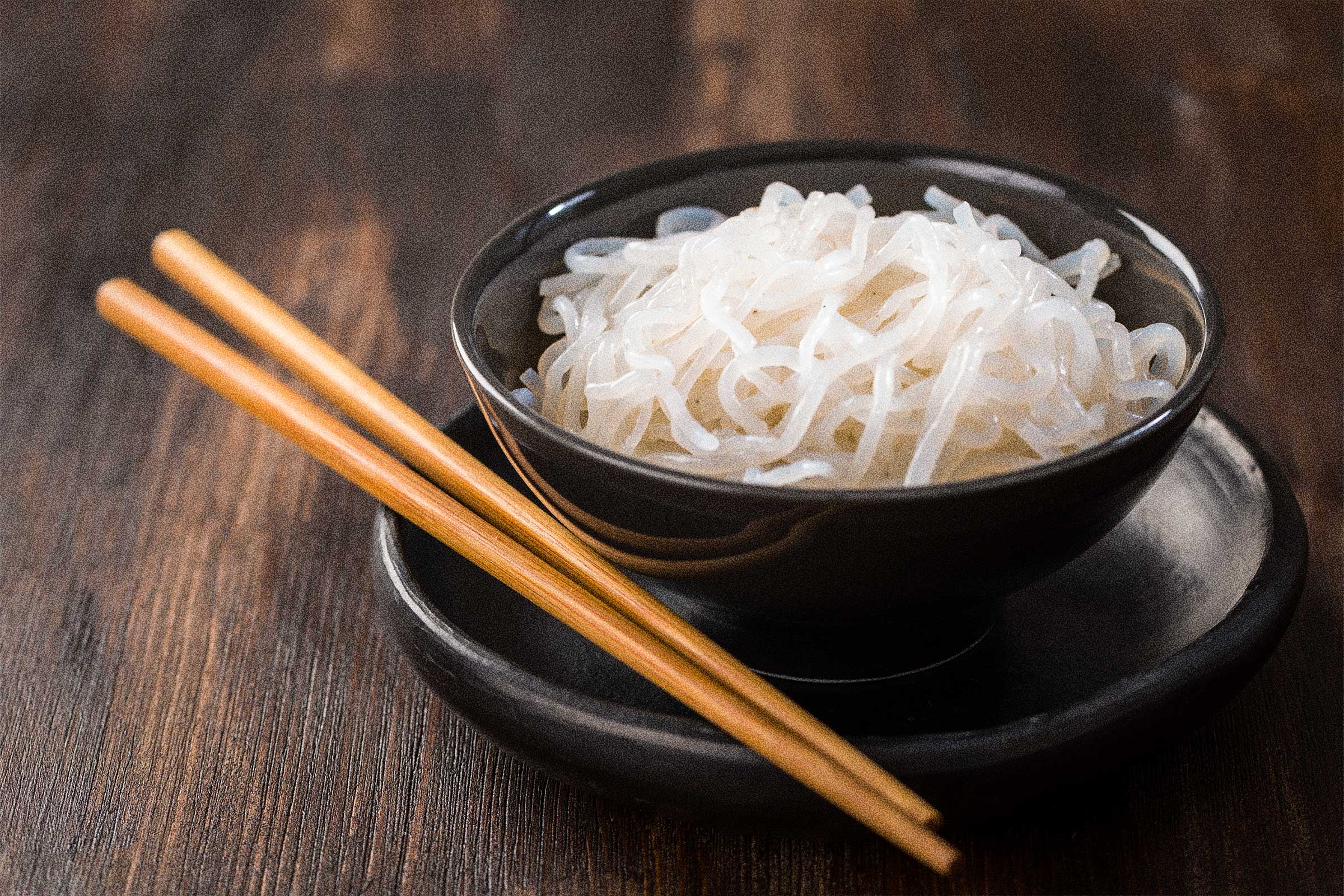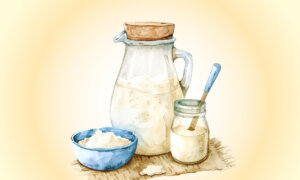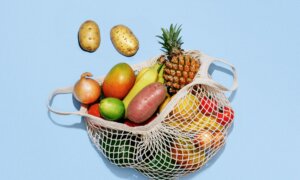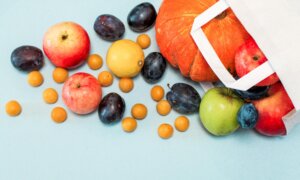Lately, articles and social media posts have appeared featuring shirataki noodles—extolling their virtues for those looking to lose weight and improve their health. The buzz is understandable, as these noodles seem to possess preternatural qualities: They are high in fiber, very low in carbs, and gluten-free, and have no fat and practically no calories.
Michaela Pretzl, a certified nutrition coach, says the glucomannan in konjac supports digestion, stabilizes blood sugar levels, and promotes a feeling of fullness.
Konjac: An Ancient Food and Medicine
Shirataki noodles are made from konjac, which has recently gained popularity in nutrition circles for its role in weight loss, cholesterol management, and digestive health. But konjac is far from new. It has been a cooking and traditional medicine staple throughout Asia for millennia.
The konjac plant, or Amorphophallus konjac, goes by several names: snake palm, devil’s tongue, elephant yam, and voodoo lily. It produces a striking and unique-looking flower.
The plant has a starchy root that contains its active ingredient, called glucomannan, a water-soluble dietary fiber that is low in calories and can absorb 50 times its weight in water. Glucomannan is what makes konjac unique.
Medicinally, konjac root is ground into a powder and used as a dietary supplement. Konjac is also made into several popular food products:
- Shirataki noodles: Transparent, jelly-like noodles made from konjac flour. Low in calories and popular in weight-loss diets.
- Rice substitutes: Low in carbs and calories with a neutral flavor and slightly chewy texture.
- Konjac jelly: Often used in snacks, candies, and desserts.
- Konjac Powder: Used as a thickener in soups, stews, and sauces.

(gontabunta/Shutterstock)
Supports Weight Loss
Because konjac absorbs a lot of water after being eaten, it promotes a feeling of fullness or satiety, helping us eat less. When glucomannan combines with water, it creates a gel, which in the stomach slows digestion, makes you feel full longer, and reduces feelings of hunger. Glucomannan
isn’t digested in the stomach or small intestine, meaning that it passes relatively unchanged into the colon, where gut bacteria ferment it—thus, improving gut health.
Results of a randomized-controlled trial published in Nutrients demonstrated that a fiber supplement containing glucomannan reduced body weight by approximately 5 percent in participants with obesity who took it for 180 days compared with participants taking a placebo. Additionally, visceral fat, BMI, and fat mass also dropped in those taking the glucomannan supplement. Notably, the supplement did result in some gastrointestinal distress in those taking it.
Other studies investigating glucomannan’s weight loss effects have had mixed results, so more research is needed to understand its effects fully.
Helps Control Blood Sugar
Recent studies support the use of konjac as a supplementary treatment to help manage Type 2 diabetes for its ability to regulate blood sugar.
Konjac glucomannan slows gastric emptying, meaning food stays in the stomach longer, which increases satiety and helps control spikes in blood sugar after meals.
It has also shown promise in reducing oxidative damage and inflammation and for its protective effect on organs such as the kidneys and liver, which are susceptible to damage in people with diabetes. Regular consumption is associated with lower cholesterol levels and better regulation of insulin, which is crucial in Type 2 diabetes.
Konjac glucomannan’s high fiber content also helps lower glucose and insulin levels after meals.
“Although KGM [konjac glucomannan] cannot be used as a drug in the treatment of disease, it can be used as a special medical food to assist the treatment of type 2 diabetes mellitus,” the authors of one study said.
Improves Skin Health
Studies show that the glucomannan from konjac also has powerful wound-healing capabilities, and some scientists are working to find effective ways to incorporate it into strategies that would promote the healing process.
In one study, researchers focused on creating a new wound-dressing material by combining glucomannan from konjac and polyvinyl alcohol. Konjac glucomannan strongly interacts with fibrin, a protein critical to blood clotting and wound healing.
In a study published on Jan. 15 in the journal Carbohydrate Polymers, researchers developed a hydrogel injection using modified konjac glucomannan to improve healing in diabetic wounds, which are complex and notoriously slow to heal. The hydrogel enhanced cell migration and the formation of new blood cells—which are critical for wound repair. It also reduced inflammation and decreased reactive oxygen species, which can make diabetic wounds worse. Ultimately, the researchers found that the hydrogel significantly accelerated the healing process in diabetic mice.
Konjac in Chinese Medicine
In China, konjac is known as
Ju Ruo and has been used in Chinese medicine for millennia. It was first described as a medicinal herb in the Shen Nong Materia Medica during the Han Dynasty, between 206 B.C. and A.D. 8. A gel made from konjac flour has been used in Chinese medicine for detoxification and suppressing tumors. Indigenous people have eaten konjac as a treatment for asthma, cough, breast pain, and hernia, as well as skin and bleeding disorders.
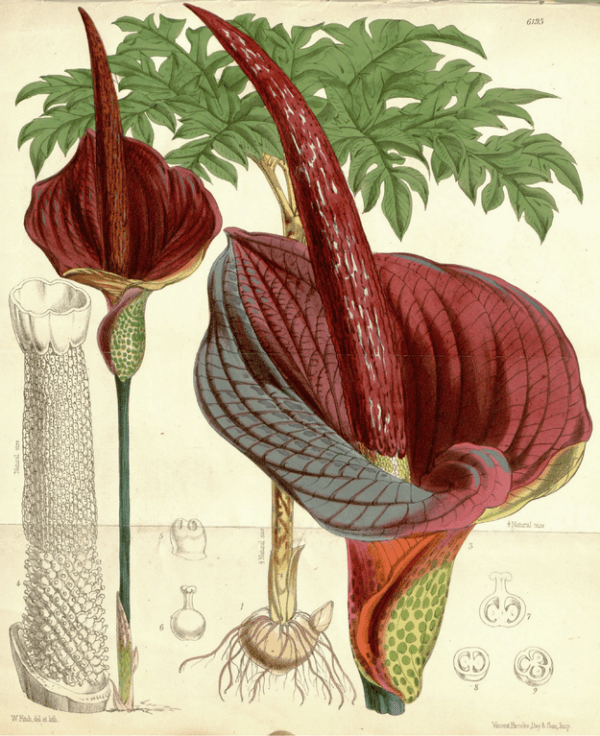
Amorphophallus konjac (Public Domain)
Contraindications
While konjac may seem like a miracle product, there are some things to consider before you try it.
Studies suggest that 3 grams to 4 grams of konjac glucomannan daily can be effective without significant side effects. However, higher doses can cause potential issues such as bloating and diarrhea. When taking glucomannan, it may be a good idea to start at a lower dose and gradually increase to see how the body reacts.
Konjac products, particularly jellies, can pose a choking hazard, especially if not chewed thoroughly, because they don’t easily dissolve in water.
Be mindful when using konjac products, especially with children (who are prone to choking) and older individuals who have difficulty chewing or swallowing. If you are taking a konjac supplement, ensure that you take it with a generous amount of water.
Some people may also experience symptoms when consuming konjac.
“Konjac products are extremely low in nutrients and can cause bloating or discomfort in some people due to their high fiber content,” Pretzl said.
“Additionally, the taste and texture of konjac noodles are quite different from traditional pasta, which may not appeal to everyone.”
Pretzl says you can find konjac in well-stocked supermarkets, Asian grocery stores, health food stores, and online.
Konjac may be an excellent option for anyone looking to incorporate something new into their cuisine or improve their health, or seeking an alternative to traditional rice or pasta.
Pretzl says konjac products are especially beneficial for those with intolerances or specific goals.
“Konjac products are a good option for people following low-carb or calorie-restricted diets, those with gluten intolerance, or anyone wanting to increase their fiber intake.”


